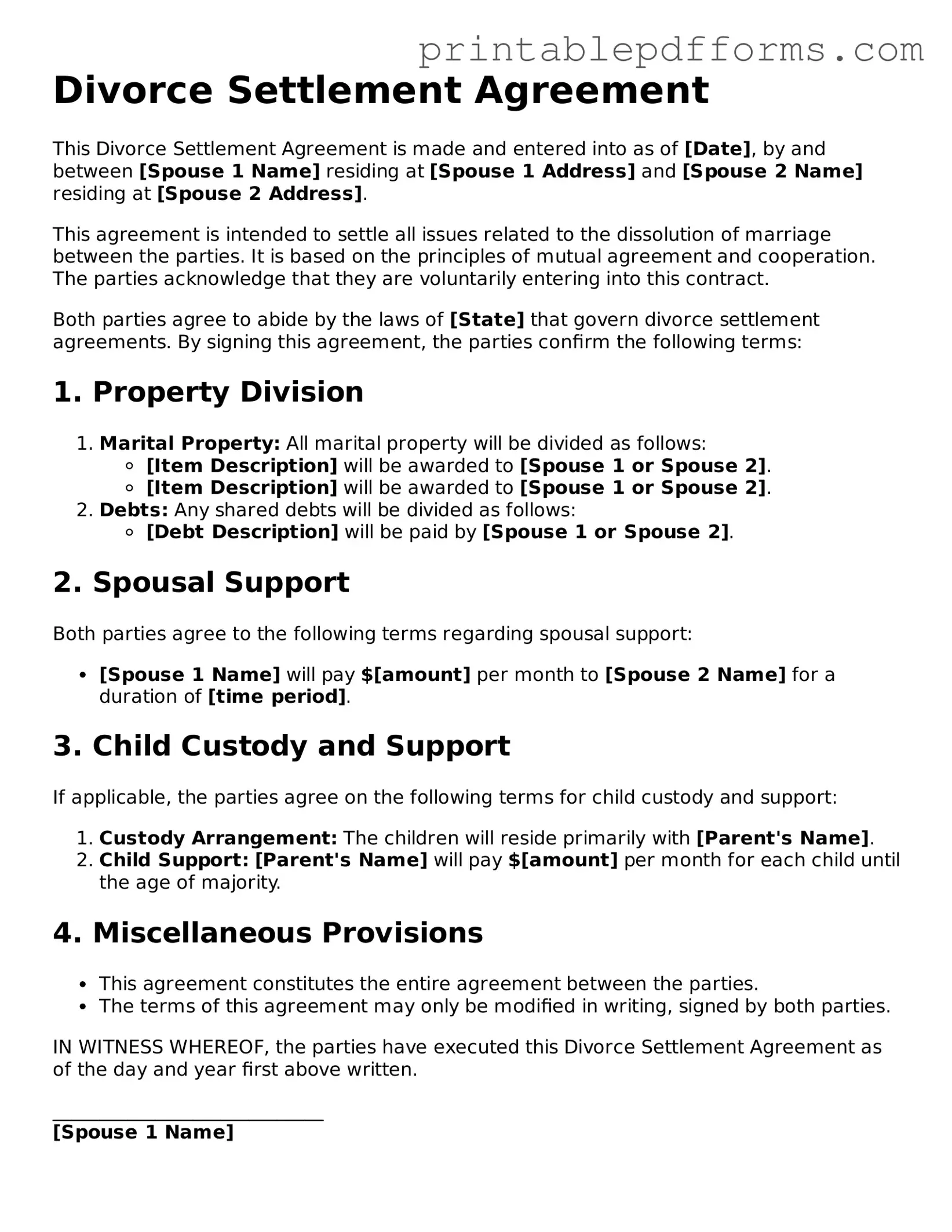What is a Divorce Settlement Agreement?
A Divorce Settlement Agreement is a legally binding document that outlines the terms of a divorce. It details how assets, debts, and responsibilities will be divided between the spouses. This agreement can cover various aspects, including child custody, visitation rights, alimony, and property division.
Who needs a Divorce Settlement Agreement?
Any couple going through a divorce should consider creating a Divorce Settlement Agreement. It is particularly important for those with children, significant assets, or debts. This document helps clarify expectations and responsibilities, reducing the likelihood of disputes after the divorce is finalized.
How do I create a Divorce Settlement Agreement?
To create a Divorce Settlement Agreement, follow these steps:
-
List all assets and debts.
-
Discuss how you want to divide these items.
-
Consider child custody and support arrangements, if applicable.
-
Draft the agreement, ensuring all terms are clear.
-
Review the document with a legal professional, if possible.
-
Both parties should sign the agreement.
Can I use a template for my Divorce Settlement Agreement?
Yes, using a template can be a helpful starting point. However, ensure that the template is tailored to your specific situation and complies with your state's laws. It is advisable to review the completed agreement with a legal professional to avoid potential issues.
What happens if we cannot agree on the terms?
If you and your spouse cannot reach an agreement, you may need to consider mediation or arbitration. These processes involve a neutral third party who can help facilitate discussions and find common ground. If all else fails, the court may need to intervene and make decisions on your behalf.
Is a Divorce Settlement Agreement legally binding?
Yes, once both parties sign the Divorce Settlement Agreement and it is submitted to the court, it becomes legally binding. This means that both parties must adhere to the terms outlined in the agreement. Failure to do so can result in legal consequences.
How can I enforce a Divorce Settlement Agreement?
If one party does not follow the terms of the agreement, the other party can seek enforcement through the court. This may involve filing a motion to enforce the agreement, which can lead to legal penalties for the non-compliant party.
Can the terms of a Divorce Settlement Agreement be modified?
Yes, the terms can be modified, but both parties must agree to the changes. If circumstances change significantly, such as a job loss or relocation, you may seek a modification through the court. It is essential to document any changes in writing and have both parties sign the updated agreement.
What if I have children? How does that affect the Divorce Settlement Agreement?
When children are involved, the Divorce Settlement Agreement must address custody arrangements, visitation schedules, and child support payments. These terms are crucial for ensuring the well-being of the children and must comply with state laws regarding child custody and support.
